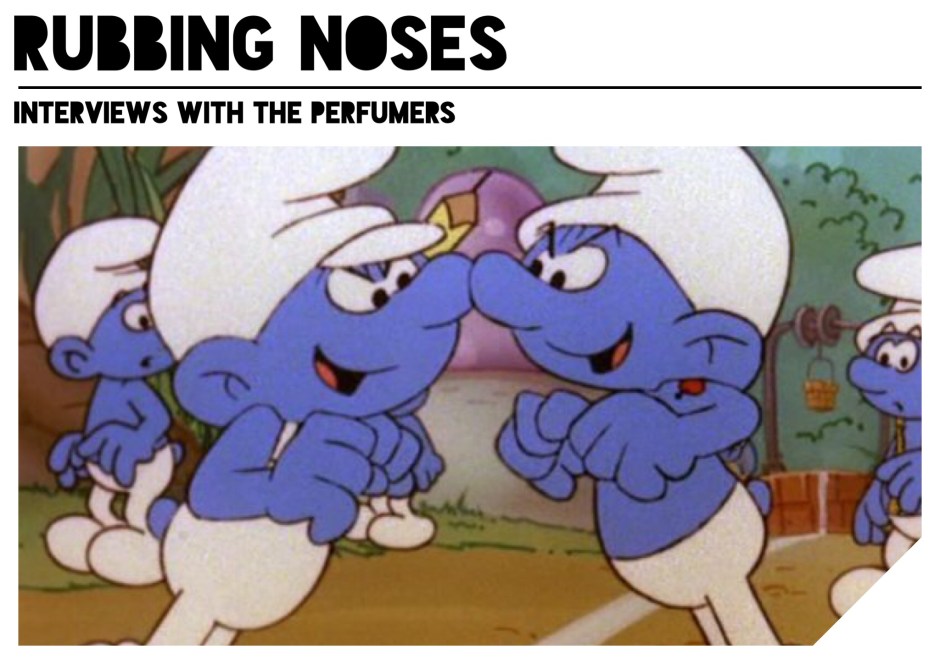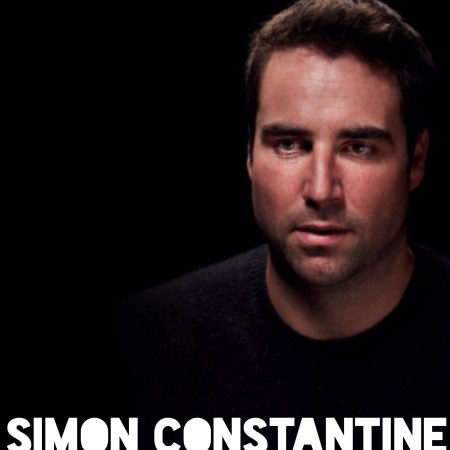
“Rubbing Noses is a series, in which I, The Candy Perfume Boy, grill the most important members of the perfume industry – the perfumers. These are the brains and noses behind the perfumes we know and love, and their unrivalled insight into one of the world’s most ancient of arts is something to be treasured, enjoyed and shared.”
This episode of Rubbing Noses focuses on one half of the dynamic father and son perfume crafting team responsible for Gorilla Perfumes, the perfume arm of cosmetics company, Lush. Simon Constantine is the son of Lush’s co-founder Mark Constantine and he has quickly proved himself to be a true talent within the world of perfume. He was the genius that mixed the two B Never to be Busy to be Beautiful fragrances ‘Inhale‘ and ‘Exhale‘ to create what we now as ‘Breath of God‘ – a truly unique and beautiful fragrance that is a shining star in the Gorilla Perfume range.
In this interview, Simon (and a tiny bit of Mark) talks about the inspiration behind three of the fragrances with Gorilla Perfume’s third volume of scent, ‘Death and Decay’, as well as discussing fragrance materials, IFRA and what makes a good perfume. I think you’ll agree that Simon has a unique view on the world of perfume, one that is shown not only here, but also in his olfactory creations which are anything but dull. Anyway, that’s enough of my babbling, let’s see what the Gorilla perfumer has to say…

TCPB: Volume 3: Death, Decay and Renewal is inspired by very personal themes and stories, such as the loss of loved ones and the end of relationships. How did you translate these strong emotions into scent?
SC: Actually it was less deliberate than that. The interesting thing with the way we develop fragrances for Gorilla is the freedom of expression. As the work began to emerge, themes and associations grew with it and there reached a tipping point where it was clear the work we were creating revolved around this theme. It happened to be an exceptionally turbulent period of time emotionally for us and there was no way of extracting that from the work being created. Sometimes we knew before the perfume was made that it would be about, for example, my grandfather’s garden, but I created my Dad’s garden almost by accident and only realised when we were sat smelling it!
TCPB: What strikes me about the collection is that, despite the subject matter, the perfumes themselves feel quite optimistic. Was it important to you to avoid doom and gloom?
SC: Not to avoid it necessarily, but to see the light and delicacy in it. In such darkness there are also moments of beauty, of happiness and of hope and it would be inaccurate not to try and describe these as well. In a way the perfumery helped me personally in coping and dealing with these losses and in finding the optimism in the hopeless.
TCPB: Death and Decay was a real surprise for me. One would expect a really pungent and funky floral based on the name, but the result is something much more palatable. It’s quite beautiful. How did you ensure that you got the right balance between the lily and the indole?
SC: Dad created this one, but I know he has spent many years not getting that balance right too!
Mark Constantine: It was loads of practice and years trying to get right. The closer you get to death, the better the lily perfumes become!
TCPB: What inspired the “boozy stumble down a basement staircase” of All Good Things?
SC: Again it was the painful end to a professional and personal working relationship which finished abruptly. Best leave it at that 😉
TCPB: One of my favourite notes in perfume is Violet, despite the fact that it’s often seen as old fashioned. It’s a note that you’ve put to good use in scents like Tuca Tuca and now, Kerbside Violet. Kerbside Violet makes the note feel really modern. How did you achieve this?
SC: Violet seems to be our recurring theme. Personally I never feel we get it quite right and although Tuca Tuca was great fun, something didn’t sit right with it. So both Dad and I spent some time smelling violets that we found in various odd places, at the side of the road or tucked into a rockery in the garden. What struck us both was the transitory nature of the scent. One moment you could smell it strongly with all its Ionones, the next it seemed to have drifted away. So in creating this fragrance I took a more naturalistic approach and majored on the delicate greens that accompany it and the fact it’s almost translucent in its odour. I also love the fact its a pioneer species, so after severe disturbance to landscape, it will often appear soon after.
TCPB: What characteristics, in your opinion, make a good perfume?
SC: I like a depth of thought in perfume creation. If someone is trying to tell a story or express themselves then I am interested. In terms of how they do this, what materials or notes they use, that is their business. Personally my tastes change as I learn and understand different materials, especially with naturals. They often have hidden sides that once you find them make them entirely different and attractive to you in a new way. I liken this to instruments in a band, you wouldn’t say ‘does this album have drums in it?’, it’s how they’re played that’s important.
TCPB: There appears to be growing concern amongst members of the perfume industry, that tightening EU legislation will further restrict the number of ingredients that perfumers and perfume houses will be able to use. What are your thoughts on these restrictions and have they impacted the way in which you create perfume?
SC: It’s a very treacherous area and one that we find difficult to traverse. Personally there seems to be a vested interest in driving natural materials out of production and replacing them with aroma chemicals. This seems to play nicely into the hands of the big perfume manufacturers who happen to specialise in creating new and novel aroma chemicals. Not only this but much of the data has originated through animal test studies and for us that remains a questionable result. Having said that, there can be no doubt that some materials do have adverse effects, especially in the areas of sensitivity and allergenic reactions. Fortunately, since the launch of the Lush Prize, we have found people we can work with who have viable non-animal tests who are helping us resolve this issue by testing both product and ingredients for us.
TCPB: Finally, how would you describe the Gorilla Perfume ‘style’ in three words?
SC: Original, expressive, weird!
TCPB: What’s next for Gorilla Perfume?
SC: Who know’s?!
Disclaimer
Image 1 via livingedge.co.uk. Image 2 via smurfs.wikia.com.
